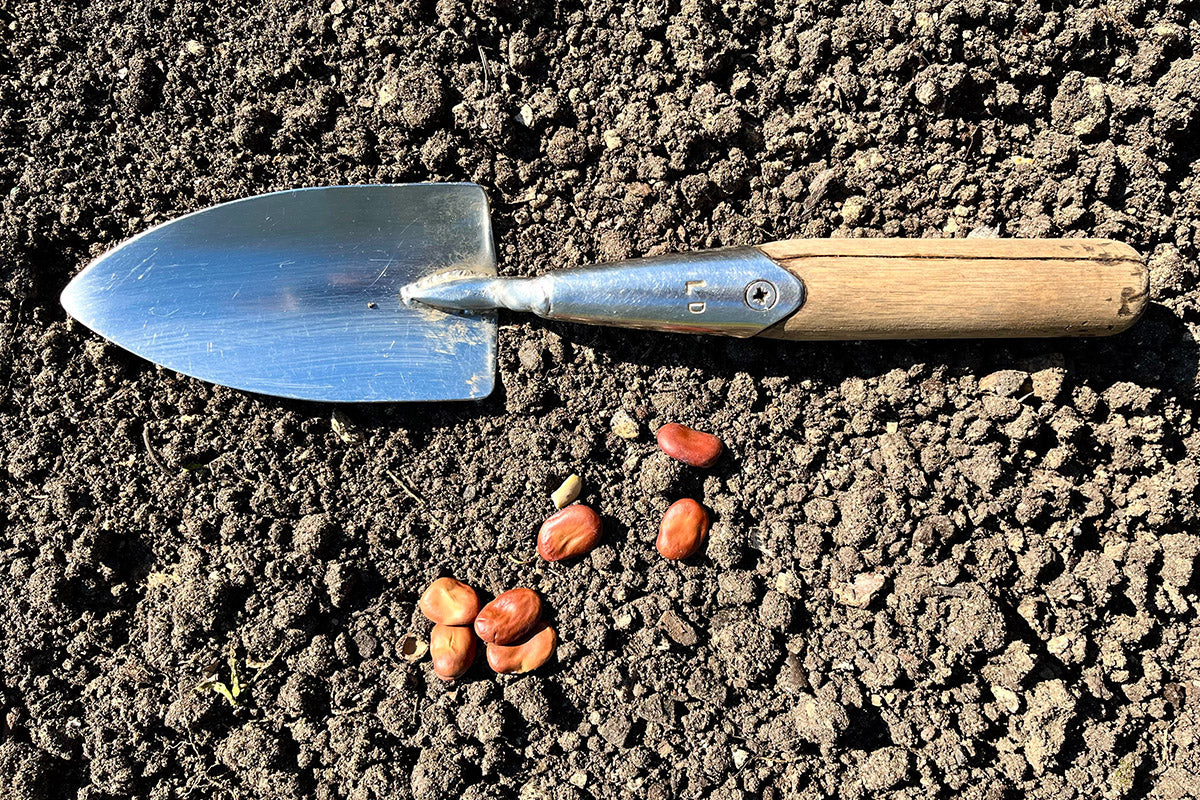Broad beans

We’ve experimented with various methods of planting broad beans over the years in our bid to achieve a successful crop. An early winter sowing is often very successful. Sown very deep - a spade's depth - the roots are well protected from cold spells, and if the emerging shoots are nipped by frost there’s plenty of subterranean growth waiting for their call to action.
Sowing in the greenhouse into pots is a popular method too. Any time in the new year will see these enthusiastic seeds germinating. When ready to be planted out they need to be introduced to the harsh realities of the UK weather slowly. A week or so in a cold frame with the lid propped up is usually enough. In the absence of a cold frame the doors of the greenhouse can be left open. We’ve trialled these two methods side by side and the directly sown plants were the most successful.
This year we’ve left the sowing very late and in contrast to other years we’ve sown the seed at just a trowel's depth. We chose a dwarf strain in the hope that they’ll need little or no support. The one problem with a later sowing is the danger of blackfly, a type of aphid smothering our plants and emerging pods. A daily patrol of the vegetable garden will usually spot the problem early and the growing tips along with the aphids can be nipped out and composted, though if you’ve kept insecticides away from your garden a healthy population of ladybirds may just tackle the job for you.







